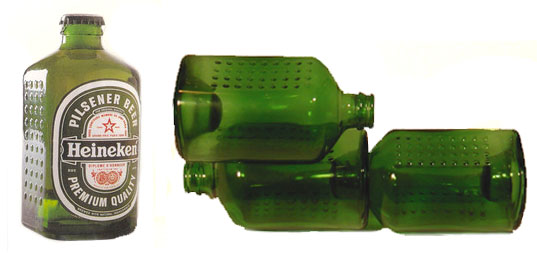In Jonah Bloom’s editorial on Marketing as Service (MAS), he challenged a couple of marketers including AT&T and Citi to “make their marketing useful” and offered up a couple of examples which he thought would provide utility for New Yorkers. To some readers, both examples sounded like acts of Corporate Social Responsibility (CSR) thus muddying the waters a bit between CSR and MAS. Without getting too academic, let me try to clarify the similarities and differences between these two important marketing constructs.
CSR is generally sponsored by a corporate entity (P&G sustainability goals ) while MAS is typically developed for a specific product or service (Charmin’s portable potties). While both CSR and MAS are meant to generate good will, CSR typically focuses on servicing society (Nike’s Live Strong donations) while MAS serves a particular target segment (Nike+ microsite & events to support runners). CSR is often trumpeted via traditional advertising; MAS is a substitute for traditional advertising. CSR strategy briefs rarely talk in terms of driving sales; MAS strategy briefs are almost always about driving sales.All that said, there are times when CSR is delivered via MAS and MAS has elements of CSR which is why the two are easily confused. A recent TAAN blog post by Peter Gerritsen provides further clarification:
Most all of us know about Cause Marketing. Doing good, and connecting the client with the beneficial efforts on behalf of the well-meaning cause. Admirable, and worthwhile. Often delivering results for both the cause and the client.A new term (at least to me) is “Marketing as Service” or “Marketing with Meaning” — providing a useful service to the public/prospect/customer as a element of the marketing effort. There have always been some fabulous “promotions” that are directly tied to the marketers product. This is going a step further — Actually being USEFUL to the audience. Instead of promoting a product, buying media time and space to advertise, holding a special event with sponsorships, this is about giving directly to the audience something of value to them and adhering the marketer’s brand to this value. There are a number of great examples that should give you a starting point in considering this opportunity for your clients. This could be a great leveraging vehicle in drawing you closer to your client, beyond the commodity ad work we all perform. (Now, I know you don’t look as your work as a commodity. So, don’t go crazy over my lumping you in with the rest of the ad agencies. But ….)
Bottom line: Marketing as Service is all about the how — how a marketer communicates with its target. Instead of talking about a particular product or service, MAS provides something the target can actually use and, in a sense, its medium becomes the message. Corporate Social Responsibility is all about the why — why a marketer is doing something for a particular cause or social issue. Instead of talking about a particular product or service, CSR hopes to generate a halo of good will over a company via pro-social messaging. Any questions?

